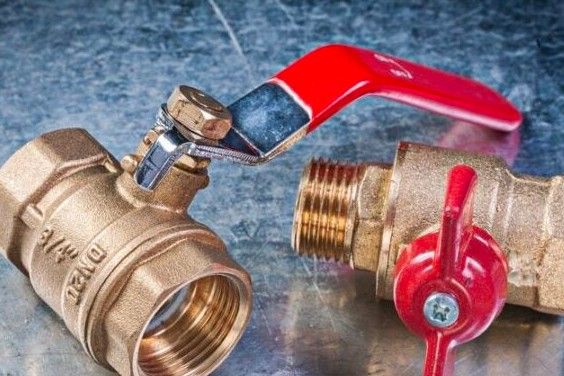Global Industrial Valves Market 2021-2030
This study examines the global market for industrial valves.
Historical data for 2010, 2015, and 2020, and forecasts for 2025 and 2030 for shipments (at the manufactures’ level), demand, imports, and exports are provided in current dollar terms (which are not adjusted for inflation). Demand totals at the country level are also presented in local currency terms. Major product types and markets are also analyzed.
Demand by product is presented for:
- Standard multiturn valves (gate and globe valves, check valves, and pinch and diaphragm valves)
- Standard quarter-turn valves (also known as rotary valves), including ball valves, butterfly valves, and plug valves (or plug cocks)
- Other standards – i.e., manually operated – valve products, including:
- Nuclear valves, which encompass hand-operated quarter turn, gate, globe, and check valves constructed of stainless steel or high alloy steel; various parts; a small percentage of automatic nuclear control valves and actuators
- Plumbing, heating, and cooling valves, which include a wide range of specialized designs, among the most common of which are anti-scald (or water mixing) bath and shower valves, and flush valves and flushometers
- Safety, relief, and combined safety-relief valves
- Steam traps (also called steam pressure reduction units), including mechanical (including an open top and inverted bucket traps, and float-and-lever traps); thermostatic; and thermodynamic (for example, disc and impulse traps) types
- Waterworks valves, including fire hydrants
- Miscellaneous valve designs, and separately sold manual valve actuators, bodies, and parts
- Automatic control valves
- Automatic regulator valves
- Separately sold automatic valve actuators
Demand by the market is presented for:
- Process manufacturing, including petroleum refining; chemicals; pulp and paper; food and beverage; and other process manufacturing, such as primary metals, rubber and plastics, textiles, and stone, clay, and glass products
- Water infrastructure, including desalination plants
- Building construction, including in boilers and HVAC, energy lines, fire protection, floor and roof drains, and plumbing and irrigation
- Oil and gas, including both upstream and midstream segments of the industry
- Electricity generation, including privately and publicly owned facilities that produce electric power through various processes for residential, commercial, and industrial use such as regulated utilities, nonutility generators (NUGs), and electricity cogeneration operations of industrial plants
- All other markets, including mining, shipbuilding, healthcare (excluding artificial heart valves), household and commercial appliances, natural gas utilities, railroad equipment, semiconductors and other discrete parts, and truck tank trailers
Key Topics Covered:
1. Executive Summary
2. Impact of COVID-19 Pandemic
- COVID-19 General Trends
- Impact on the Economy
- Impact on the Construction Industry
- Impact on the Global Industrial Valves Industry
3. Overview
- Study Scope
- Historical Trends
- Regional Trends
- Demand by Region
- Production by Region
- International Trade
- Products Overview
- Pricing Trends
- Smart Valves & Building Automation
- Legal & Regulatory Overview
- Product Standards
- Environmental Concerns
- Remanufactured Valves
4. Standard Valves
- Scope & Product Description
- Regional Trends
- Product Overview
- Multiturn Valves
- Product Description
- Regional Trends
- Suppliers
- Quarterturn Valves
- Product Description
- Regional Trends
- Suppliers
- Other Standard Valves
- Scope & Product Description
- Regional & Product Trends
- Waterworks Valves
- Plumbing & HVAC Valves
- All Other Standard Valves
- Suppliers
5. Automatic Valves
- Scope & Product Description
- Regional Trends
- Product Overview
- Control Valves
- Product Description
- Regional Trends
- Suppliers
- Regulator Valves
- Product Description
- Regional Trends
- Suppliers
- Automatic Actuators
- Product Description
- Regional Trends
- Suppliers
6. Markets
- Demand by Market
- Process Manufacturing
- Scope & Market Size
- Regional Trends
- Demand by Market Sector
- Suppliers
- Water Infrastructure
- Scope & Market Size
- Regional Trends
- Suppliers
- Building Construction
- Scope & Market Size
- Regional Trends
- Suppliers
- Oil & Gas
- Scope & Market Size
- Regional Trends
- Suppliers
- Electricity Generation
- Scope & Market Size
- Regional Trends
- Suppliers
- Other Markets
- Scope & Market Size
- Regional Trends
- Suppliers
7. North America
8. Central & South America
9. Western Europe
10. Eastern Europe
11. Asia/Pacific
12. Africa/Mideast
13. Industry Structure
- Key Findings & Industry Composition
- Market Share
- Mergers & Acquisitions
- Marketing & Distribution
- List of Industry Participants
14. Appendix
Companies Mentioned
- Baker Hughes
- Danfoss
- Emerson Electric
- Schlumberger
- SMC
For more information about this report visit https://www.researchandmarkets.com/r/5cnz5d

